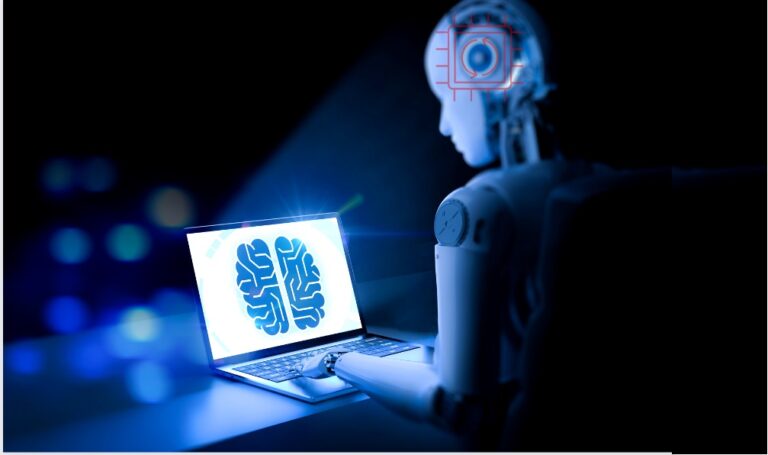Businesses of all types and sizes are leveraging machine learning (ML), a prominent subset of artificial intelligence (AI), for various purposes. ML is successfully used for everything from fraud detection to targeted advertising on social media platforms.
Another potential use of ML in business is predictive analytics, which can help your company fine-tune its internal processes. One type of prediction that is invaluable is churn rate predictions. What is the customer churn rate, and how can you use ML to help reduce it?
Understanding Customer Churn Rate
Customer churn rate, or attrition, is a metric used to determine how many clients your company loses over a given period. It’s most often expressed as a percentage and is commonly used to determine how many people end their subscriptions if your business uses a subscription-based model. The churn rate can also represent how many employees leave your company.
Your company will shrink if it has a higher churn rate than a growth rate. On the other hand, if your business’s churn rate is lower than its growth rate, it’s growing. The ultimate goal should be to have a higher growth rate than a churn rate. It often signifies that your organization is performing well in its market, has decent customer loyalty and has good brand recognition.
ML Can Predict Customer Churn Rate
Calculating your company’s churn rate is fairly simple. First, subtract the number of customers you have at the end of the month from those at the beginning of the month. Then, divide that result by the number of clients at the beginning to find your business’s churn rate.
Calculating your churn rate is easy, as it’s a simple math equation. However, advanced ML algorithms can take vast historical data and calculate a company’s churn rate much more efficiently than a human employee.
ML can automatically predict churn rates using real-time data, which is a good way for companies to determine new strategies to reduce it, especially in today’s competitive markets.
ML can even flag which clients are most likely to churn based on buying history, frequency of purchases, account activity, customer service interactions and other important data points.
The number of remote workers is expected to increase to 36.2 million by 2025, and automation will likely play a more important role in facilitating productivity. Leveraging ML, especially for tracking metrics and making predictions, is no exception.
“Companies that can determine which people may churn can employ various techniques to retain them.”
ML Workflow to Predict Churn Rate
Here is a typical ML workflow that your company may use to determine customer churn rates:
- Step 1: Gather historical customer data.
- Step 2: Split information into training and test sets.
- Step 3: Train the ML model using past churn data.
- Step 4: Use the model to make predictions about potential churn.
- Step 5: Determine if forecasts are accurate.
Your company can use different ML algorithms for churn rate predictions, including logistic regression, decision trees, neural networks and random forests. Remember that every company is unique, so you may need to undergo some trial and error to determine which is right for your business.
A few industries that can benefit from using ML for churn rate prediction are retail, banking, health care and e-commerce. Organizations in these industries are in a competitive market, meaning analyzing and predicting churn rates is essential for decision-making. If your business is in one of these markets, you should adopt ML to predict churn rates.
Strategies to Reduce Customer Churn Rate
Although ML predictions do not inherently reduce the churn rate, they play a major role in helping company leaders make more effective decisions. Here are some strategies your business can implement to reduce churn and keep customers engaged with your brand.
1. Identify Strengths and Weaknesses
A common tactic companies use to identify their strengths and weaknesses is the SWOT analysis. Use this to determine where your business is succeeding and falling short. How can you grow if you do not understand your business’s shortcomings?
2. Gather Customer Feedback
One of the best ways to learn why customers churn is by directly asking them. Surveys, forms and other direct communications can help your company determine why people are unsatisfied with your products or services. Many businesses leverage survey data to reduce churn and increase the likelihood of customer retention.
3. Focus on the Customer Experience (CX)
After gathering feedback, you must take the time to understand the customer journey from start to finish. What pain points does someone face? Is it difficult for them to interact with your customer service representatives? How challenging is it to return products? All these questions will help you determine how to improve your business’s unique CX so more people stay active.
“ML predictions can provide specific recommendations about where to improve to reduce churn.”
Leveraging ML to Increase Customer Retention
Machine learning is an evolving type of AI, and algorithms will become even more advanced. Companies using ML aim to make accurate predictions so they can take the necessary actions to influence future outcomes. Knowing which people are more likely to leave can significantly reduce churn and improve customer retention.










